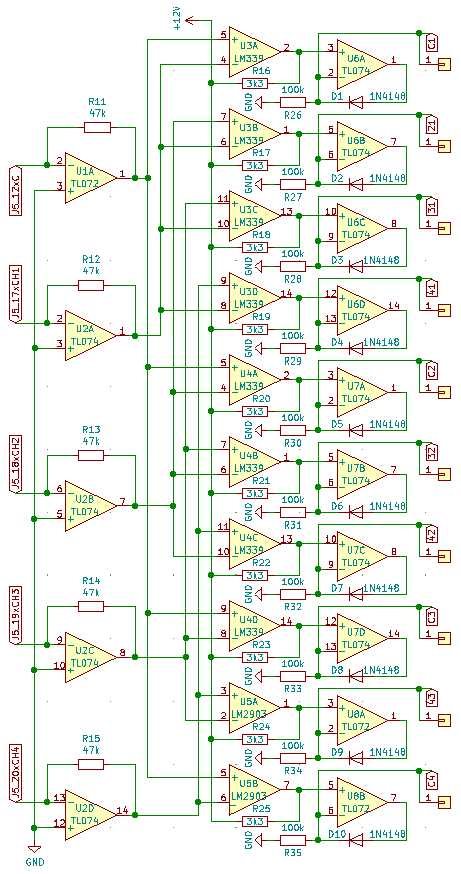Other Parts Discussed in Thread: TL074, LM2903, TL072, LM311, LM319-N
Hi everybody!
I'm trying to find out how to enlarge the built-in hysteresis voltage of LM339 when comparing two different varying (AC) voltages at + and - inputs.
In my design i have 5 different AC signals which can vary from -10V up to +10V, and I wish to compare each signal with every other signal.
I take the signal from inverting buffer op amp (TL072 and TL074) and then send the conditioned signal to LM339 (and LM2903) comparators. After the comparator stage, each signal goes to the half-wave rectifier (TL074), and later on to the digital CMOS (CDxxx) stage. The rectifying stage is used to secure that the negative comparator output voltage doesn't go to the CMOS digital logic.
Power supply is -12V and +12V for each chip (TL072, TL074, LM339, LM2903). There is a bit of high frequency noise in each signal, and my plan is to filter that with simple RC filter..
When the input signals are close one to another I get the oscillation on comparator output, so I wonder is there a chance to enlarge the hysteresis? I need the hysteresis voltage (comparator precision) of about 0,1V. The problem is that the input signals are constantly changing (+/- 10V ampliude) so I can't use the design, or the calculator described in TI Kay/Claycomb article on hysteresis.
Also, I can't find out what is the maximum factory hysteresis voltage of LM339?
Thanks!


